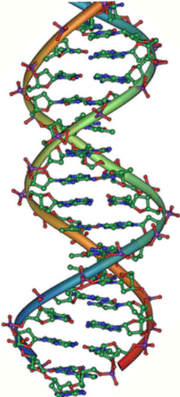Principles of Biology: Genes, Phylogeny, Diversity, Continuity, Homeostasis, Interactions
Principles of Biology
Genes
The gene is the basic unit of hereditary material, and physically consists of a segment of chromosome DNA. In response to issues affecting the estate, this basic unit also receives other names, such as Recon, when what is complete is the ability recombianción (the recognition will be the smallest segment of DNA capable of recombining) and mutón when responds to the mutations (and thus the mutón be the smallest segment of DNA with a capacity to mutate).
Overall, a gene is a DNA fragment codidifica a protein or peptide.
Phylogeny
It is called phylogeny to study the evolutionary history and genealogical relationships of the strains. Sequence comparisons of DNA and proteins, facilitated by the technical development of molecular biology and genomics, together with the comparative study of fossils and other paleontological generate accurate information for phylogenetic analysis. The efforts of biologists to address scientific understanding and classification of the diversity of life has led to the development of several competing schools, such as phenetic, which can be considered outdated, or cladistics. It is undisputed that the very recent development of the ability to decipher on solid foundations of the species phylogeny is catalyzing a new phase of high productivity in the development of biology.
Diversity: the variety of living organisms
Phylogenetic tree of living things based on data on their rRNA. The three major kingdoms of living things are clearly differentiated: bacteria, archaea and eukaryotes as were described initially by Carl Woese. Other trees based on genetic data are otherwise similar but some organisms can be grouped into branches slightly different, presumably owing to rapid rRNA evolution. The exact relationship between the three main groups of organisms still remains as a major subject of debate.
Despite the underlying unity, life exhibits an amazing diversity in morphology, behavior and life cycles. To address this diversity, biologists attempt to classify all life forms. This scientific classification reflects the evolutionary trees (phylogenetic trees) of different organisms. These classifications are a matter for the disciplines of systematic and taxonomy. The taxonomy places the organisms in groups called taxa, while systematics seeks to find relationships.
Traditionally, living things have been classified into six realms:
Eubacteria
Archaea
Protista
Fungi
Plantae
Animalia
However, at present this system of five kingdoms are believed outdated. Among the more modern ideas, it is generally accepted the system of three domains:
Archaea (originally Archaebacteria)
Bacteria (originally Eubacteria)
Eukaryote
These domains reflect whether cells have nucleus or not, and differences on the outside of cells. There are also a number of "parasites" intracellular, in terms of activity metabolism are increasingly "less alive":
Virus
Viroids
Prions
The recent discovery of a new class of virus called Mimivirus, has caused him to propose the existence of a fourth domain due to its special features, which now only be included by the agency.
Continuity: the common ancestor of life
It is said that a group of organisms have a common ancestor if you have a common ancestor. All existing organisms on Earth descended from a common ancestor or, where appropriate, an ancestral gene pool. This last universal common ancestor, ie the most recent common ancestor of all organisms that exist now, it is believed that appeared for about 3,500 million years.
The notion that "all life comes from an egg" (from the Latin "Omne vivum ex ovo") is a foundational concept of modern biology, and he says that has always existed a continuity of life from its initial origin to the today. In the nineteenth century it was believed that life forms could appear spontaneously under certain conditions. Biologists believe that the universal genetic code is a litmus test for the theory of universal common descent (UCD) of all bacteria, archaea and eukaryotes.
Homeostasis: adapting to change
Symbiosis between clownfish of the genus of clownfish and anemones sea. The fish protects the anemone from other fish-eating anemones while the tentacles of the anemone protect the clownfish from predators.
Homeostasis is the property of an open system to regulate its internal environment to maintain stable conditions, with multiple adjustments of dynamic equilibrium controlled by interrelated regulation mechanisms. All living organisms, whether unicellular or multicellular have their own homeostasis. To give some examples, homeostasis manifests cellularly when maintaining a stable internal acidity (pH) level of body when the animals warm blooded maintain a constant internal body temperature, and level of ecosystem, consuming carbon dioxide the Plants regulate the concentration of this molecule in the atmosphere. The tissues and organs can also maintain its own homeostasis.
Interactions: groups and environments
All living things interact with other organisms and their environment. One of the reasons that biological systems can be difficult to study is that there are too many interactions. The response of microscopic bacteria to the sugar concentration in its environment (in its environment) is as complex as that of a lion looking for food on the African savannah. The behavior of a particular species can be cooperative or aggressive, parasitic or symbiotic. Studies become more complex when two or more different species interact in the same ecosystem, the study of these interactions is a matter of ecology.
Like it on Facebook, Tweet it or share this article on other bookmarking websites.


